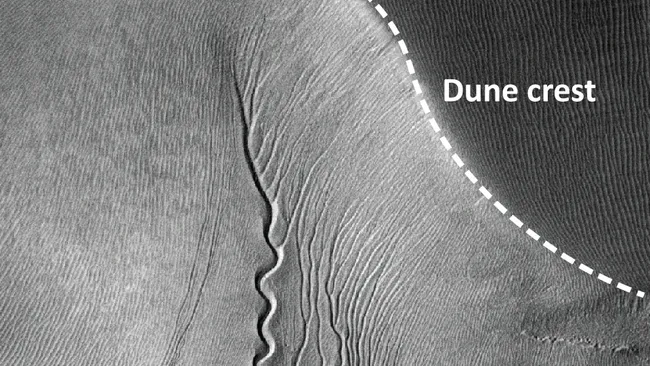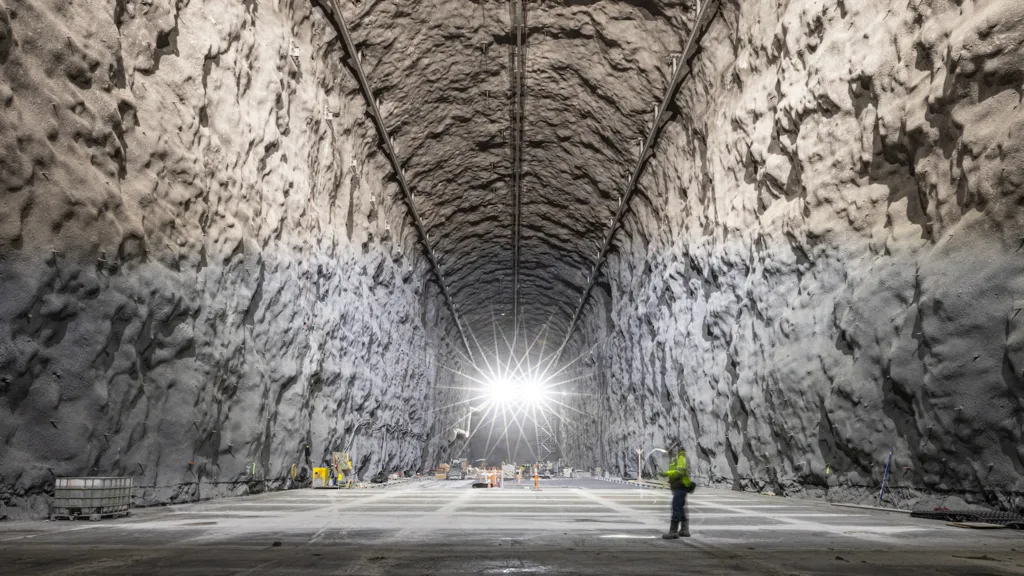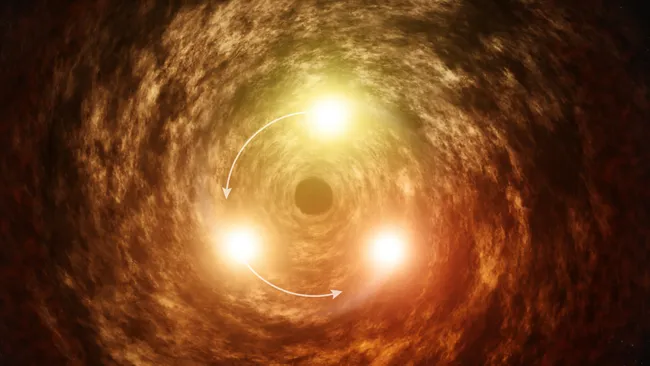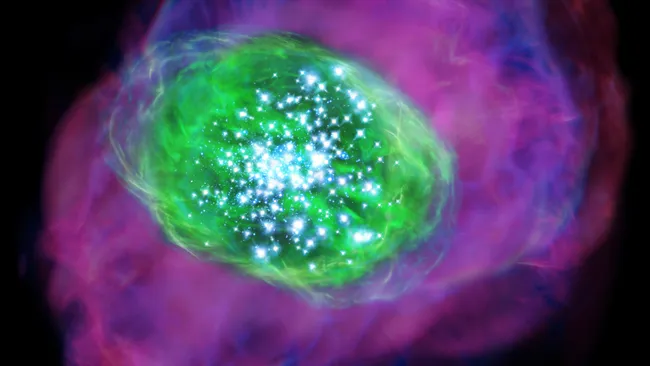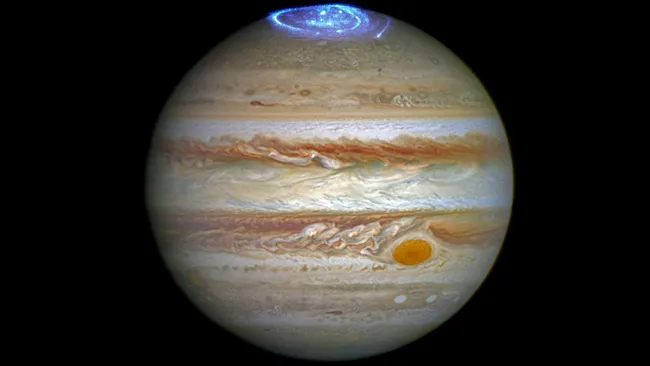Blocks of dry ice on Mars may carve mysterious gullies across the planet’s dunes, behaving much like the sandworms from the film Dune.
Planetary scientists have long been intrigued by the winding trenches scattered across Martian deserts. These channels appear freshly cut, complete with raised edges and twisting paths. Yet Mars today is too cold, too dry, and too barren for flowing water—or for any giant worms—to be responsible.
A new Utrecht University study proposes that these gullies form as slabs of carbon dioxide ice slide down Martian dunes during seasonal warming. In spring, the ice blocks sublimate—turning directly from solid to gas—creating pockets of trapped gas that explode outward, propelling the ice across the sand.
Inside a Mars simulation chamber, researchers placed CO₂ ice blocks on miniature sand dunes under low pressure and freezing temperatures. As the ice heated, it vented gas explosively, sending the block gliding downslope. The sliding ice dug narrow trenches and pushed sand into small levees, mimicking the Mars gullies seen from orbit.
“It felt like watching the sandworms from Dune,” said Lonneke Roelofs, lead author and Earth scientist at Utrecht University. “High gas pressure blasted sand in all directions—it was mesmerizing.”
The findings rule out liquid water as the cause, suggesting a purely physical, water-free process that still reshapes Mars today. This mechanism also provides insight into how landscapes evolve on both Earth and other planets through similar geological dynamics.
“We experimented with slopes of different steepness,” added Simone Visschers, co-author and master’s student at Utrecht University. “Once we found the right angle, the CO₂ ice block burrowed into the sand just like a mole—or a sandworm from Dune. It was surreal.”
While no real sandworms roam Mars, its dunes may indeed stir to life each spring, as dry ice blocks tunnel briefly through the sands before vanishing into vapor.
The research was published on October 8 in Geophysical Research Letters.

